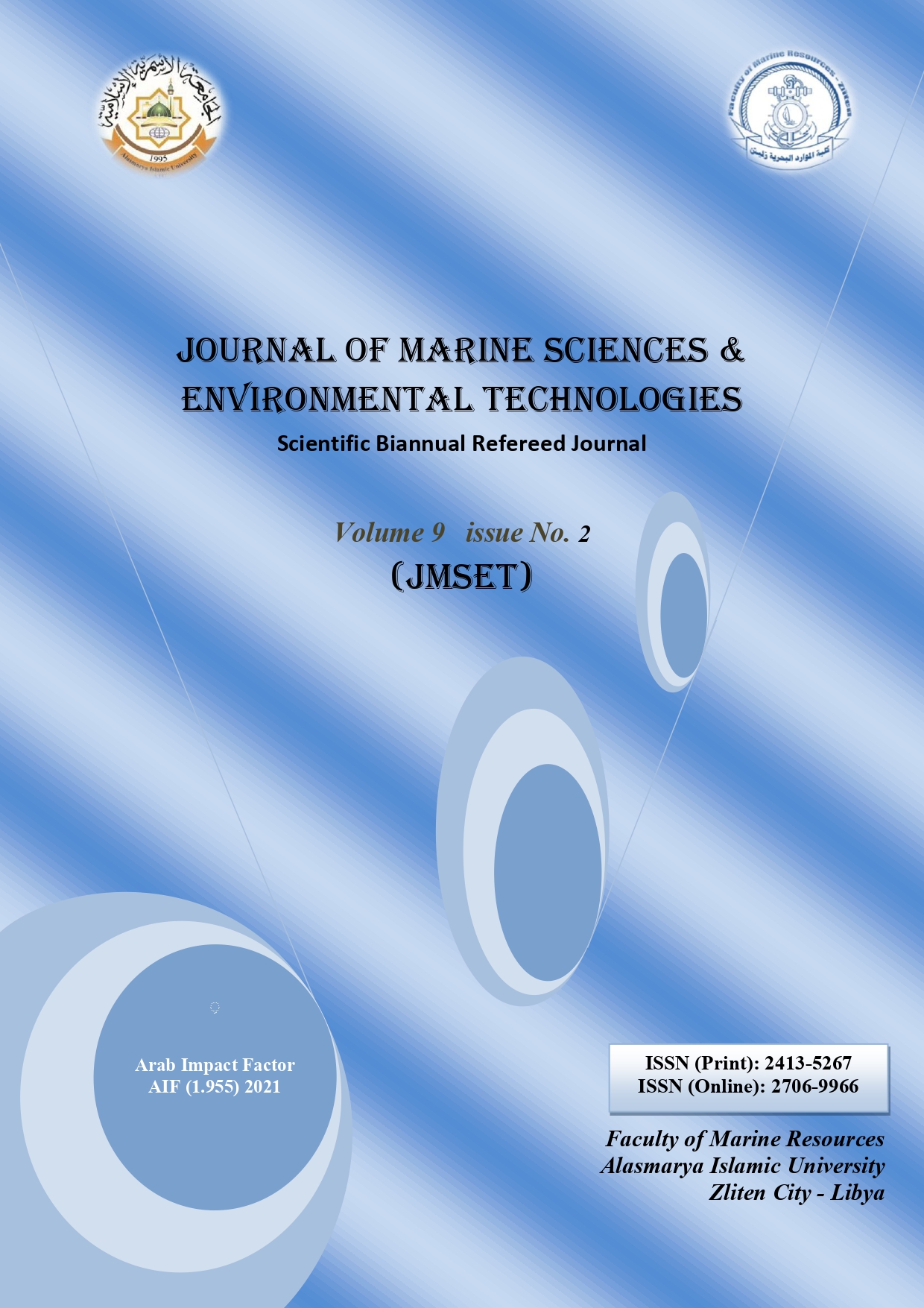Application of Modeling to Human Reliability Assessment (HRA) and Error Analysis Method in Marine Systems
DOI:
https://doi.org/10.59743/jmset.v9i2.167Keywords:
Human error, Human factors, Human performance reliability assessmentAbstract
The main objective of this research is to reduce human error in the workplace environment, especially during critical shipboard operations using a Human Reliability Assessment (HRA) system. Critical operations on board ships require full awareness of operational risks by the crew, as human error represents a major problem, and is a major cause of marine accidents at from 75 to 96% of all marine accidents, due to the different circumstances and times at which the crew perform their duties on board ships. Various factors such as; the rapid growth of technology, ergonomics, and social aspects may lead to or significantly contribute to potential human error. It is essential to be aware of the procedures and actions that require skill on the part of the human element. Because human error is the number one cause of accidents in marine. So. The role of the ship's crew over time requires not only the ability to make appropriate decisions but also the ability to solve problems. This study was based on a descriptive approach and discussed the human factors affecting the human element causing marine accidents and how to reduce marine accidents using the Human Performance Reliability Assessment (HRA) system.
Downloads
References
Aalipour, M., Ayele, Y. Z., & Barabadi, A. (2016). Human reliability assessment (HRA) in maintenance of production process: a case study. International Journal of System Assurance Engineering and Management, 7, 229-238. DOI: https://doi.org/10.1007/s13198-016-0453-z
Ahmad, A. (2016). Human Reliability Analysis (HRA). Lecture Presentation, UTM, Malaysia. Available at: [https://arshadahmad.files.wordpress.com/2016/09/raam-p8-3human-reliability-analysis.-pdf].
Akyuz, E., & Celik, M. (2015). A methodological extension to human reliability analysis for cargo tank cleaning operation on board chemical tanker ships. Safety Science, 75, 146155. DOI: https://doi.org/10.1016/j.ssci.2015.02.008
Akyuz, E., Celik, M., Akgun, I., & Cicek, K. (2018). Prediction of human error probabilities in a critical marine engineering operation on-board chemical tanker ship: The case of ship bunkering. Safety science, 110, 102-109. DOI: https://doi.org/10.1016/j.ssci.2018.08.002
Allianz Global Corporate & Specialty. (2018). An annual review of trends and developments in shipping losses and safety. Safety and Shipping Review 2018. Available at: [https://www.agcs.allianz-.com/assets/PDFs/Reports/AGCS_Safety_Shipping_Review_2017.pdf].
Arnhus, M. (2014). Modeling of Technical, Human and Organizational Factors and Barriers in Marine Systems Failure Risk: Modeling of Stability Operations on a Semi-Submersible Unit with the use of Bayesian Belief Networks. Master's thesis, Institutt for marin teknikk, Norway.
ATD (2008). Atomic Energy Regulatory Board Technical Document (AERB TD). Available at: [https://www.aerb.gov.in/storage/uploads/documents/regdocpnOoF.pdf]. India: AERB. Atomic Energy Regulatory Board.
Barnett, M. L. (2005). Searching for the root causes of maritime casualties: —Individual competence or organisational culture?. WMU Journal of Maritime affairs, 4, 131-145. DOI: https://doi.org/10.1007/BF03195070
Batalden, B. M., & Sydnes, A. K. (2014). Maritime safety and the ISM code: a study of investigated casualties and incidents. WMU Journal of Maritime Affairs, 13, 3-25. DOI: https://doi.org/10.1007/s13437-013-0051-8
Baziuk, P. A., Rivera, S. S., & Nuñez McLeod, J. (2014). Towards human factor taxonomy with cognitive generic terms. Proceedings of the World Congress on Engineering.
Berg, H. P. (2013). Human factors and safety culture in maritime safety. Marine Navigation and Safety of Sea Transportation: STCW, Maritime Education and Training (MET), Human Resources and Crew Manning, Maritime Policy, Logistics and Economic Matters, 107, 107-115. DOI: https://doi.org/10.1201/b14959-20
Ceyhun, G. C. (2014). The impact of shipping accidents on marine environment: A study of Turkish seas. European Scientific Journal, 10(23), 10-23.
De Felice, F., Petrillo, A., Carlomusto, A., & Romano, U. (2013). Modelling application for cognitive reliability and error analysis method. Int J Eng Technol, 5(5), 4450-4464.
EMSA (2020). European Maritime Safety Agency. Available at: [http://www.emsa.europa.eu/damage-stability-study/items.html?cid=77:publications-&id=3734].
Fowler, E. (2018). Critical evaluation of quantitative human error estimation methods in light of different incident causation models and Hollnagel’s research on performance variability. M.Sc. dissertation, University of Aberdeen.
Havlikovaa, M., Jirgl, M., & Bradac, Z. (2015). Human reliability in man-machine systems. Procedia Engineering, 100, 1207-1214. DOI: https://doi.org/10.1016/j.proeng.2015.01.485
Hogenboom, I. (2018). Comparison of Human Reliability Analysis Method Applied on the Volkerak sluice complex in the Netherlands. Master Thesis, Aalborg University Esbjerg.
Hollnagel, E. (1998). Cognitive reliability and error analysis method (CREAM). Elsevier.
ICS (2019). safety4sea. Available at: [https://safety4sea.com/cm-al-salam-boccaccio-98-bad-weather-poor-emergency-procedures-and-over-1000-people-dead-in-red-sea.:Editorial Team].
Kennedy, G. (2006). Human Reliability Assessment. Course lecture. Available at: [https://www.coursehero.com/file/20936455/HRA12].
Maritime, H. E. A. (2014). Human Error and Maritime Safety. M.Sc. dissertation. Ministry of Shipping and Island Policy, Directorate of Marine Education, Department A of Regulations and Educational Programs, Asynchronous Distance Education Service Technical Committee,
Martinez de Oses, X., & Ventikos, N. P. (2003). A critical assessment of human element regarding maritime safety: Issues of planning, policy and practice. Revista del Instituto de la Navegación de España, 17(17), 68-80.
Parvez, M. (2010). Greenwich Maritime Institute. Available at: [https://www.he-alert.org/filemanager/root/site_assets/standalone-_article_pdfs_0905-/HE01005.pdf].
Rashed, S. K. (2016). Human reliability assessment, the sophisticated tools for minimizing human errors in maritime domains. International Journal of Research in Engineering & Technology, 4(2), 85-98.
Rothblum, A. M., Wheal, D., Withington, S., Shappell, S. A., Wiegmann, D. A., Boehm, W., & Chaderjian, M. (2002). Human factors in incident investigation and analysis. Report of Working Group. In: 2nd International Workshop on Human Factors in Offshore Operations, Texas, 142p.
Thomson, R. J. (2002). Technical Report. Avai;able at: [https://www.healert.org/filemanager/root/-site_assets/standalone_article_pdfs_0605-/he00715.pdf]. Australian Maritime Safety Authority.
Downloads
Published
Issue
Section
License
Copyright (c) 2023 Journal of Marine Sciences and Environmental Technologies

This work is licensed under a Creative Commons Attribution 4.0 International License.









